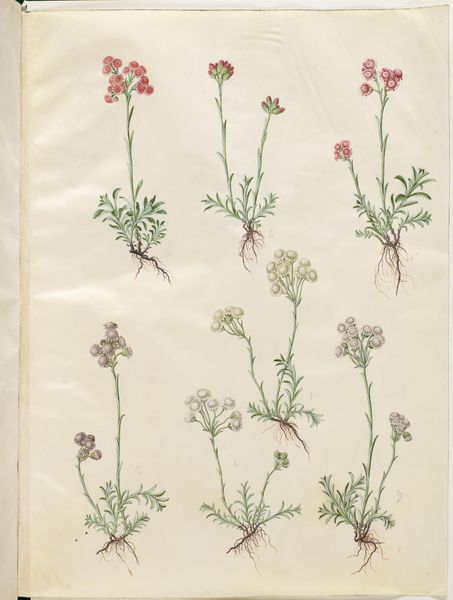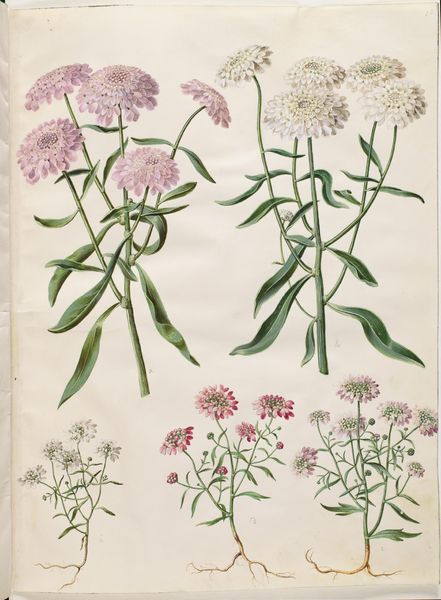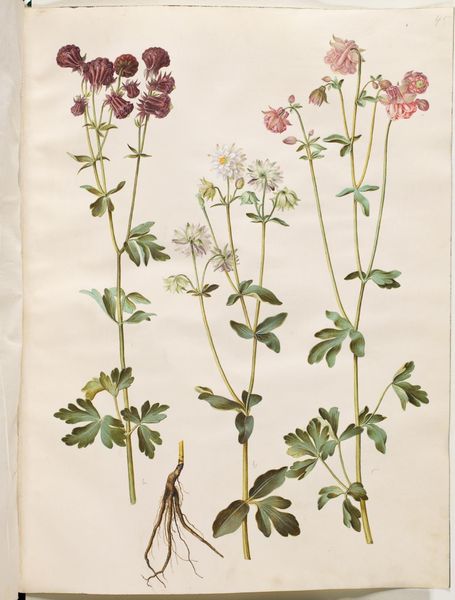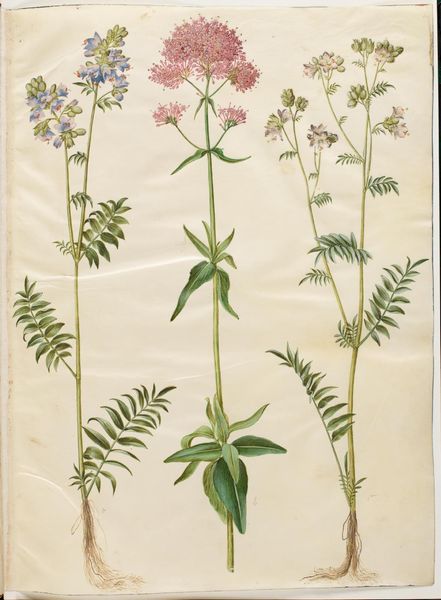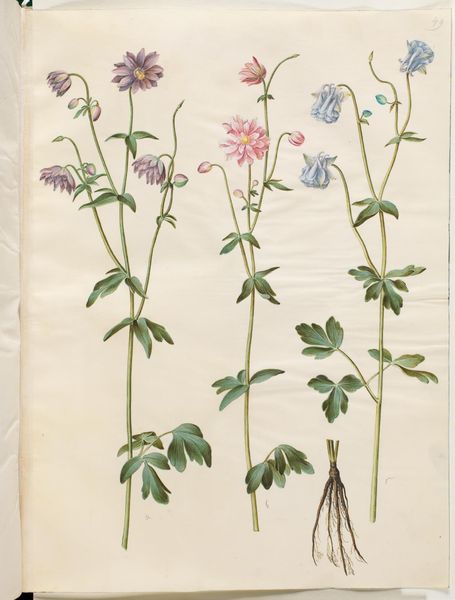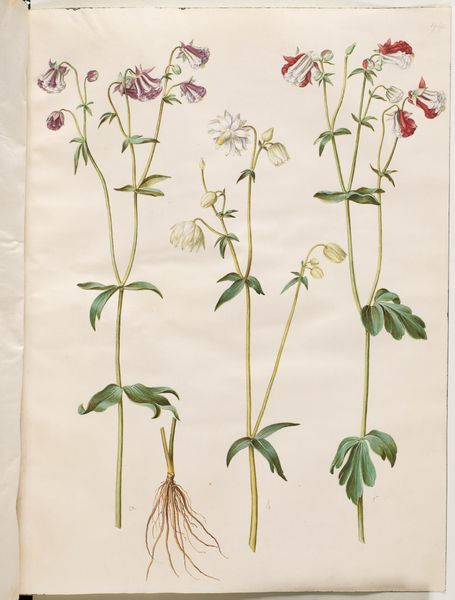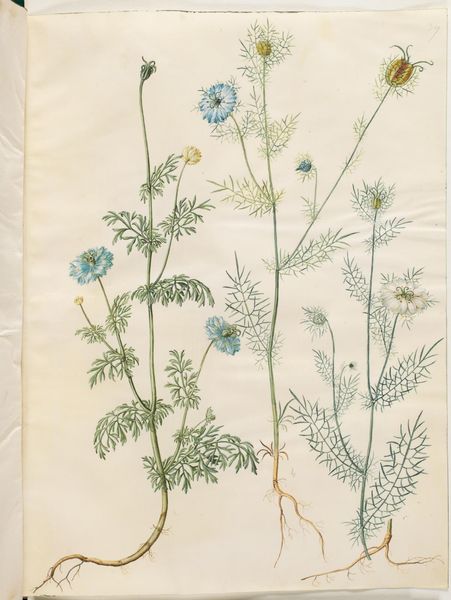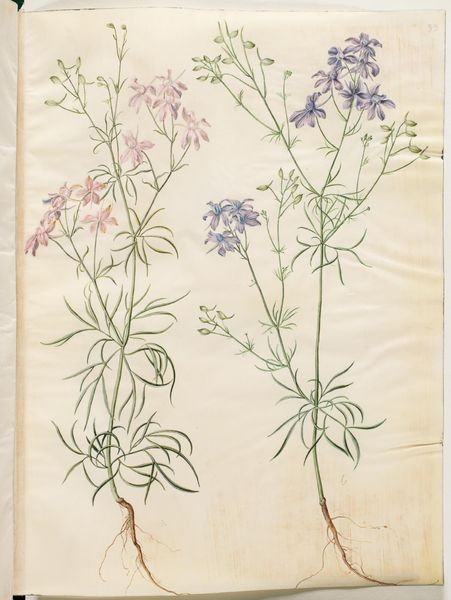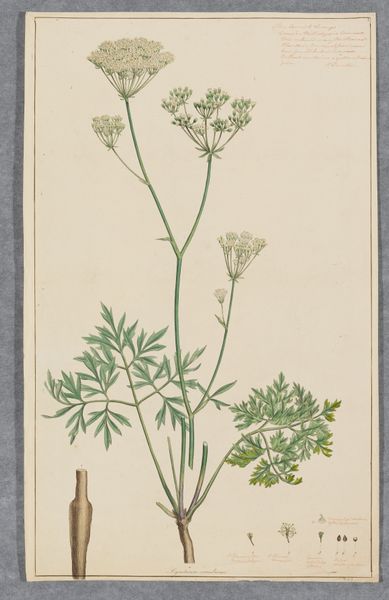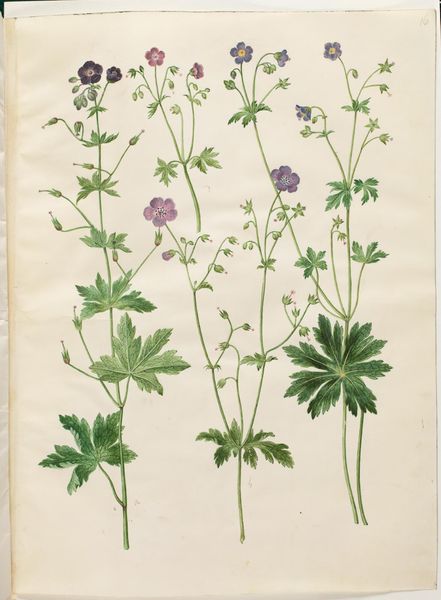
Iberis sempervirens (snepude); Coriandrum sativum (almindelig koriander); Iberis amara (bitter sløjfeblomst) 1649 - 1659
0:00
0:00
drawing, coloured-pencil, gouache
#
drawing
#
coloured-pencil
#
dutch-golden-age
#
gouache
#
possibly oil pastel
#
coloured pencil
#
botanical drawing
#
realism
Dimensions: 505 mm (height) x 385 mm (width) (bladmaal)
Editor: Here we have Hans Simon Holtzbecker’s "Iberis sempervirens; Coriandrum sativum; Iberis amara," created sometime between 1649 and 1659 using drawing, colored pencil, and gouache. It’s incredibly detailed, almost scientific in its precision. What stands out to you? Curator: Consider the materials. Colored pencil and gouache were relatively accessible. The shift toward depicting plants with such precision during the Dutch Golden Age speaks volumes about societal values. Scientific accuracy gains prominence, doesn't it? This also implies labor: who ground the pigments? Who prepared the paper? These are crucial questions when analyzing this work. Editor: That's a perspective I hadn't fully considered. So, the value isn't solely in the botanical representation, but in understanding the means of its production within its specific time? Curator: Precisely. Think about the supply chains necessary for colored pencils in the 17th century. Who profited from the trade? The material reality of creating this drawing reflects a complex web of social and economic relationships. Also, notice the 'realism' tag in the work's metadata. Is that an accurate assessment of how we're consuming it, now? Or what the work IS? Editor: That makes me consider how the meaning of art constantly shifts with our evolving material world. Does something being realistic at its conception mean it maintains this view through different periods of consumption? Curator: Exactly! That tension – between the object, its production, and its evolving reception - that’s the very material of art history, isn't it? Editor: This has completely reshaped how I understand the role of material and making in interpreting art. Thanks! Curator: A pleasure. I've found it fascinating, too.
Comments
No comments
Be the first to comment and join the conversation on the ultimate creative platform.
